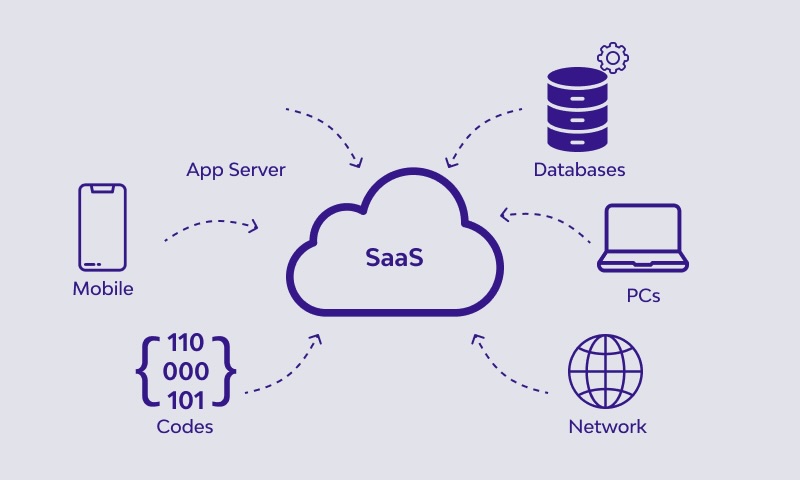Understanding CMDB and how it can streamline your workflow

Understanding Configuration Management Database (CMDB) and How It Can Streamline Your Workflow In the world of information technology, managing complex systems and maintaining accurate records of assets, configurations, and relationships can be a daunting task. This is where a Configuration Management Database (CMDB) comes to the rescue. In this article, we’ll dive into the concept of CMDB, its benefits, and how it helps organizations streamline operations and increase productivity. Back to basics: What is a Configuration Management Database (CMDB)? A Configuration Management Database (CMDB) is a centralized repository containing information about an organization’s IT assets, their relationships, and their configuration details. It provides a comprehensive view of all components in the IT infrastructure, including hardware, software, network devices, and applications. Benefits of CMDB 1. Improved configuration visibilityA CMDB offers a holistic view of an organization’s IT infrastructure, enabling stakeholders to understand the relationships and dependencies between assets. This visibility supports better decision-making, improved troubleshooting, and faster incident resolution. 2. Efficient change managementWith a CMDB, organizations can effectively track and manage changes in their IT environment. By maintaining accurate configuration records and documenting change processes, the CMDB helps minimize risks associated with unauthorized or unplanned changes, ensuring smooth transitions and reducing the impact of change-related incidents. 3. Enhanced service managementCMDB serves as the backbone of ITSM processes such as incident management, problem management, and asset management. It helps IT teams quickly identify root causes, reduce downtime, and deliver faster services, resulting in higher customer satisfaction. 4. Compliance and audit readiness CMDB plays a critical role in ensuring compliance with industry standards, regulations, and internal policies. It allows organizations to track and manage IT assets, software licenses, and configuration baselines -facilitating audits and demonstrating adherence to security and legal requirements. A Configuration Management Database (CMDB) is a valuable asset for organizations seeking to streamline IT operations and optimize service management processes. By providing a centralized repository for configuration data, a CMDB increases visibility, improves change management, and enables effective incident resolution. Ultimately, CMDB can lead to greater efficiency, reduced downtime, improved compliance, and contribute to long-term organizational success in today’s fast-changing IT landscape.
What does ITSM mean

What does ITSM mean? IT Service Management (ITSM) is a strategic and valuable function that helps organizations effectively manage, deliver, and support IT services. With the right ITSM processes and tools, businesses can increase productivity, improve customer satisfaction, and ensure smooth operations of their IT systems. What Is IT Service Management (ITSM)?ITSM is about implementing and managing IT services in a structured and efficient way. It is a framework that helps organizations organize and deliver IT services to meet business needs and support overall goals. ITSM includes a range of processes and routines covering everything from incident management and change management to problem management and configuration management. Why Is ITSM Important? ITSM plays a crucial role in ensuring that IT services run seamlessly and that users receive the support they need. Here are some reasons why ITSM is so important: 1. Improved efficiency and productivityBy applying well-defined processes and routines, organizations can optimize IT operations and achieve higher efficiency. Incident and problem management enable fast resolution of IT-related issues, while change management minimizes disruption and risk when implementing new services or changes to existing systems. 2. More effective marketing and sales. With a strong CRM system, companies can gain a holistic view of their customers, including buying behavior, preferences, and past interactions. This information can be used to create targeted marketing campaigns and sales strategies, increasing the chances of generating more revenue. 3. Improved customer service. By gathering and storing customer data in a central system, companies can equip employees with better tools to manage customer interactions. Service teams can quickly access customer information and history, making it easier to resolve issues and answer questions. This leads to an improved customer experience and strengthens the company’s reputation as a reliable partner. </p 4. Increased efficiency and productivity. A strong CRM system can help automate routine tasks such as sending emails and reminders, freeing up employees to focus on value-creating work. It also enables better prioritization and follow-up on important tasks, boosting both productivity and efficiency. 5. Alignment with business goals. ITSM ensures that IT services are aligned with organizational needs and strategy, making IT a proactive driver of business success rather than just a support function. Ultimately, a good CRM system can give a company a competitive advantage by increasing customer satisfaction, efficiency, and productivity. By managing customer data effectively VisionFlow as an ITSM- system Better IT Service Management (ITSM) is critical for modern organizations. By using VisionFlow’s tools, businesses can optimize IT services, increase productivity, and improve customer satisfaction. With proactive management of incidents, problems, and changes, organizations can ensure stable IT operations and meet the growing demands of the digital landscape. Take the next step toward successful ITSM implementation with VisionFlow!
KCS – Why is it good?

What is KCS? Knowledge-Centered Service (KCS) is a methodology for knowledge management in customer support where the team builds and shares knowledge in real time while solving cases. When knowledge becomes part of the work itself, efficiency increases, costs decrease, and the customer experience improves.Instead of a static knowledge database, a living knowledge base emerges as employees capture solutions directly during interactions with customers.If the answer doesn’t exist, the employee first searches the knowledge base and then creates a new article if needed. In this way, the organization continuously learns and improves its support process over time. KCS – Three Core Principles 1. Integrate knowledge into the workflow. Employees write and update articles based on real cases. The knowledge becomes immediately available to colleagues and customers. 2. Use knowledge as a process indicator. By measuring article usage, you can identify gaps and increase the relevance of the knowledge base. 3. Create a learning cycle. Insights from customer interactions become improvements to the content. The team continuously refines articles so the knowledge base evolves alongside the organization. What are the benefits of KCS? KCS increases efficiency as the team reuses proven solutions and reduces duplicate work; response times are shortened and resources are freed up. The customer experience improves when more users can find answers directly in an accessible knowledge base and solve simpler problems on their own. At the same time, the culture of sharing is strengthened: employees document insights as they arise and update articles when new situations occur. The result is a knowledge base that grows, stays up to date, and drives continuous improvement of support. Summary CS makes knowledge part of the work itself, not a side task. The result is faster resolutions, higher quality, and more predictable support – with a knowledge base that reflects real customer cases and is continuously improved. Read more in our knowledge base here. Make knowledge part of the work We’d be happy to continue the conversation and show you concretely how VisionFlow can simplify your daily work. We base the demo on your workflows and show how KCS makes knowledge easy to find and reuse. Book a demo Contact us
What does SaaS mean?

What does SaaS mean? Software-as-a-Service (SaaS) is one of the most popular types of cloud-based solutions. It allows companies to purchase and use software on a subscription basis instead of buying a license for each user. What are the benefits of SaaS? SaaS is a licensing model where software is provided as a service through the cloud. Instead of purchasing software licenses to be installed on a physical computer or server, the user pays for access to the software via a subscription delivered online. This way, users can access the software from anywhere and on any device. Low startup costs: One of the biggest advantages of SaaS is the reduced need for large upfront investments. Instead of purchasing software licenses and server equipment, the user pays a monthly subscription fee. This makes it easier for small businesses to get started. Flexibility: SaaS offers greater flexibility since users can access the software from anywhere with an internet connection. This is especially useful for organizations with multiple locations or employees who travel frequently. Scalability: Because the software is delivered through the cloud, subscriptions can easily be scaled up or down depending on the company’s needs. This is useful for businesses with seasonal fluctuations or rapid growth. Automatic updates: Since the software is provided through the cloud, updates and maintenance are simple. Users don’t have to worry about installing new updates, reducing the risk of security issues. Better collaboration: Because SaaS is accessible from anywhere with an internet connection, it is easier for employees to collaborate on projects. Users can share files and work in real time, increasing productivity and efficiency. VisionFlow for case management VisionFlow works with a modular setup, meaning the system can easily be tailored to the needs of your organization. VisionFlow is an established Swedish company, founded in 2001, fully GDPR and Schrems II compliant, with all servers located in Sweden. The VisionFlow platform consists of several components and modules that can be customized to your operations. Its user-friendly design streamlines the entire workflow so you don’t have to work in multiple different systems.
CRM and VisionFlow

What Is CRM and Problem Management? CRM (Customer Relationship Management) is a strategic approach to managing the interactions between companies and their customers. It’s about building long-term, profitable relationships by managing customer data, communication, and feedback. Here are some of the most important reasons why having a strong CRM system is essential: 1. Increased customer satisfaction and loyalty. A good CRM system makes it possible for companies to better understand their customers by collecting and analyzing customer data. This allows businesses to tailor marketing campaigns and offers to customer needs. When customers feel that their preferences are considered, satisfaction and loyalty increase. 2. More effective marketing and sales. With a strong CRM system, companies can gain a holistic view of their customers, including buying behavior, preferences, and past interactions. This information can be used to create targeted marketing campaigns and sales strategies, increasing the chances of generating more revenue. 3. Improved customer service. By gathering and storing customer data in a central system, companies can equip employees with better tools to manage customer interactions. Service teams can quickly access customer information and history, making it easier to resolve issues and answer questions. This leads to an improved customer experience and strengthens the company’s reputation as a reliable partner. </p 4. Increased efficiency and productivity. A strong CRM system can help automate routine tasks such as sending emails and reminders, freeing up employees to focus on value-creating work. It also enables better prioritization and follow-up on important tasks, boosting both productivity and efficiency. 5. Better decision-making. With centralized customer data, companies can make more informed decisions about marketing, sales, and customer service. Analyzing customer data can reveal trends and patterns that lead to stronger strategies and greater success.In the end, a solid CRM system can give companies a competitive edge by increasing customer satisfaction, efficiency, and productivity. VisionFlow as a CRM systemVisionFlow is a comprehensive CRM system that provides a flexible and customizable platform for businesses of all sizes. With integrated case management features, it helps organizations streamline their customer service processes and better manage customer relationships.VisionFlow also enables teams to respond to customer inquiries quickly and effectively. In addition, it offers an extensive set of features that make it ideal for any organization’s needs. This makes VisionFlow the perfect CRM solution for companies aiming to maximize efficiency and productivity. Read more here Test VisionFlows CRM for free today!
Deviation Management with VisionFlow

Deviation Management with VisionFlow Handling deviations is important for any organization to function well. But managing deviations is not always simple. A good deviation management system benefits the organization and makes work easier for all employees. Learn more about how VisionFlow can support organizations with deviation management. What is a deviation? A deviation means that something differs from what is normal or expected, and it can arise from many different causes. Deviations can vary in severity, from something minor like a broken lamp to serious accidents. What is deviation management? Deviation management means documenting faults and shortcomings detected within an operation in order to correct the problem. The purpose is also to address issues permanently by identifying the root cause of the deviation. Working actively with deviation management should not be seen as negative, but as an opportunity for improvement. How should you work with deviation management? It is important for an organization to have clear routines for how deviations are handled. Reporting deviations is a cornerstone of systematic improvement work. All deviations should be reported, registered, investigated, and corrected. It must also be clear how deviations are handled and reported, and it should be easy to report them quickly in a deviation management system. This way, actions can be taken immediately to correct the problem or prevent the same deviation from happening again. VisionFlow as a Deviation Management System With VisionFlow, you get a deviation management system that helps your organization keep complete control of ongoing deviations, monitor progress, and stay updated as new cases are reported—so every deviation can be addressed as smoothly as possible.VisionFlow allows you to manage multiple processes in one system without switching tools, helping you save money on licenses, staff training, and operations. One of the best ways to prevent errors and find improvements is to collaborate and engage employees. In VisionFlow, communication is both location- and person-independent, with all information gathered in one place, making it easy for the entire team to resolve deviations.In addition, VisionFlow is a fully Swedish-owned company with all servers located within the EU and GDPR compliance built in, ensuring that sensitive data is always handled with the highest level of security. Read more here.
Choose the Right Case Management System – Public Sector

A modern case management system helps municipalities and public authorities handle large volumes of cases quickly and securely. When everything is gathered in a single, unified flow, duplicate work decreases, transparency increases, and citizens receive better service.